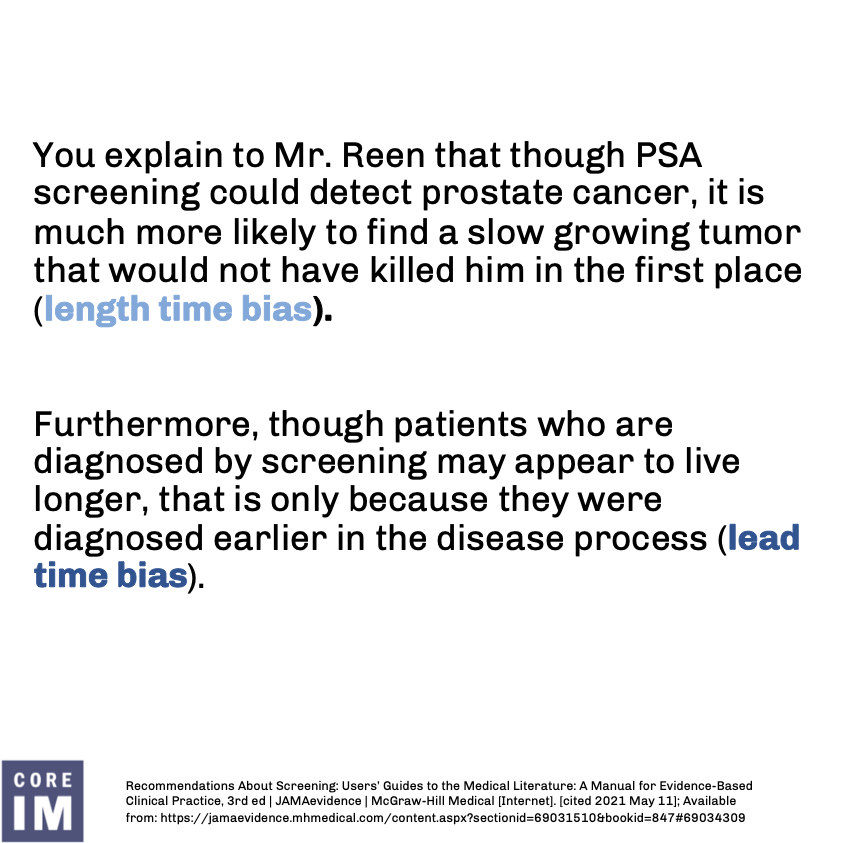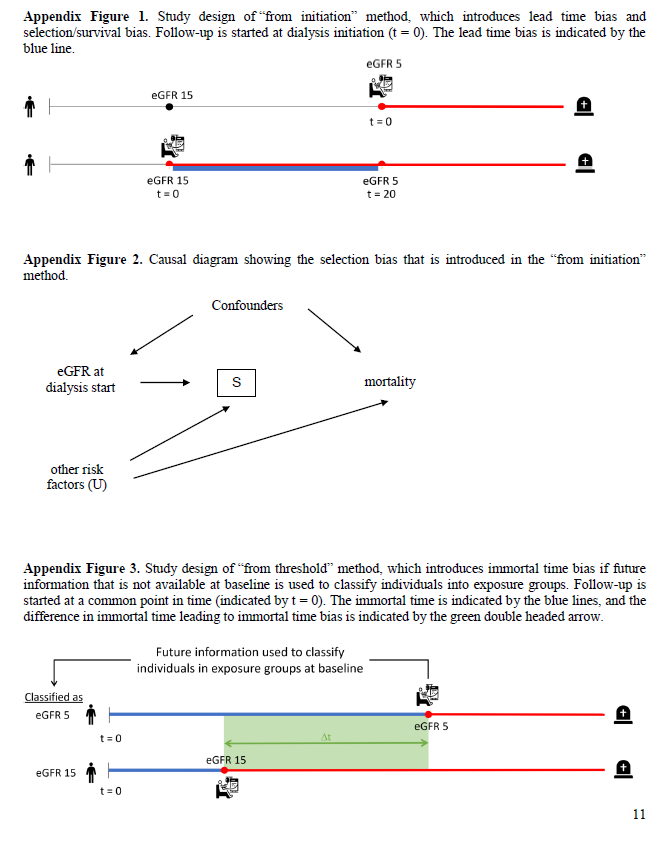Lead Time Bias
Lead-time bias occurs when a screening test detects a disease earlier in its course than it would have been detected without the screening test. (Figure 1)
#FOAMed written by #ChatGPT
https://catalogofbias.org/biases/lead-time-bias/
This can lead to an overestimation of the benefits of the screening test, because it appears that the test is prolonging the patient's survival. However…the screening test [may] not [have] changed…the patient's prognosis. (Figure 2)
https://www.cancernetwork.com/view/study-mammography-older-women-stirs-controversy
The gold standard by which a screening test is evaluated remains the prospective, randomized controlled trial, demonstrating reduced morbidity and mortality.
Screening for Cancer: Evaluating the Evidence (Figure 3)
https://www.aafp.org/pubs/afp/issues/2001/0201/p513.htmlLead-time bias can be a problem when evaluating the effectiveness of screening tests, because it can lead to an overestimation of the benefits of the test. It is important to take lead-time bias into account when interpreting screening studies. (Figures 4 5 6 7)
https://www.coreimpodcast.com/2022/05/03/lead-and-length-time-bias/
Exempli gratia:
GFR reporting…helped us realize there was a larger proportion of CKD patients with GFR below 20…
GFR at initiation [of dialysis treatment varies] across countries, from ~ 5 in Taiwan to about 11 in the US.
(See full example in #NephJC)
[I]f dialysis is safe, and improves uremic milieu, why not start earlier?…Trends in initiation did change, and we began to start dialysis earlier…
[However, n]ot accounting for the time of initiation [c]ould…lead to lead time bias
[Study] authors then used traditional analytical approaches to introduce immortal time bias as in previous observational studies and demonstrated that early dialysis initiation was associated with worse outcomes, the opposite of the primary results. Similarly, when they started follow-up at dialysis initiation, which introduced selection/survivor bias and lead time bias, the hazard ratio for early initiation was 1.58 (1.37 to 1.83) compared with late initiation…demonstrating the effect of incorrect analytical techniques
(Fig 8-11) http://www.nephjc.com/news/dialysis-timing












Comments
Post a Comment